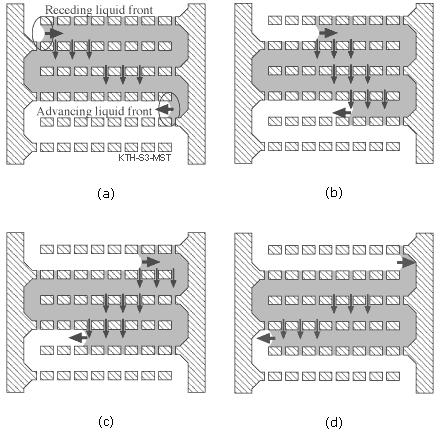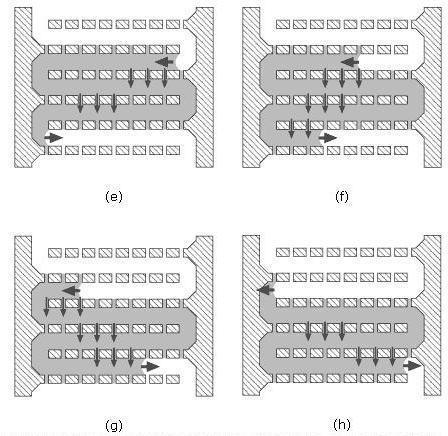Microfluidic components for lab-on-chip applications
We develop liquid control components for microfluidic systems by engineering the flow channel geometry and by tailoring the microchannel surface properties. Valves, mixers, pumps, interfacing, liquid dosing components, etc, are designed, tested and evalualuated.
XXXX–XXXX
An important trend in biotechnology, medicine and chemistry is the miniaturization of fluidic systems. Miniaturization allows the reduction of the amount of chemicals, increases sensitivity and speed of analysis, offers portability of the instrumentation or equipment and potentially reduces production costs through batch fabrication or high volume replication techniques. The controlled handling of small amounts of liquids is therefore a growing field in microsystem technology (MST) and referred to as microfluidics.
In small-scale fluidic systems, the dominating physical effects are surface tension and frictional forces. The liquid behaviour is therefore governed, to a large extent, by capillary forces, while the flow regime is laminar. This is reflected in our research focus on the control of the liquid behaviour in microfluidic systems by engineering the flow channel geometry and by tailoring the microchannel surface properties. Valves, mixers, liquid metering structures, etc, are designed, tested and evaluated using simple and cost effective fabrication methods.
The Microsystem Technology group has taken the lead in the microfluidics related research efforts in the SUMMIT competence centre, and started a collaboration with two industrial partners on the development of novel microfluidic interfaces. In a first research effort, a novel gas-to-liquid interface system is being developed for the collection of dust samples directly into a microliquid sample. The envisaged applications include narcotics and explosives detection.
A second research effort focuses on the development of a hybrid inkjet printhead system. It is the objective of this work to combine the performance of silicon printhead nozzle plates with non-silicon or non-batch fabricated actuator systems. Part of this work will study the adaptation of existing printheads for drop-on-demand systems for biotechnical applications.
A number of fundamental functional components were also developed. A first structure is a novel liquid junction for automated timing of liquid movement on-chip. The simultaneous presence of two liquid plugs at the uncomplicated valve junction triggers the further movement of the liquids. The structure was shown to successfully function and forms the basis for several novel and useful functions, including liquid AND gates, contactless on-chip liquid sample control, timing of independent processes on the same microchip, bubble-free joining of liquids, all of which pose great challenges in the area of microfluidics. Other research efforts focussed on manufacturability and reliability of plasma deposited fluorocarbon films.
Another novel concept tested was a microdevice for mixing liquid samples using surface tension induced distributive mixing. The device requires no actuation during mixing and is fabricated using a single etch process. Fast and efficient mixing of reactants is important in biochemical and biological applications, but is a non-trivial challenge in a microsystem due to the non-chaotic nature of the laminar flow regime. Micromixers shown earlier require either actuation or relatively complex device geometries and fabrication techniques. As illustrated in Figure 1, the novel micromixer consists of a meandering channel, in which the meander walls are perforated. The device utilizes surface tension effects to create a time dependent flow pattern inside a liquid plug as this plug moves through the mixer chamber.


Project sponsor
- SUMMIT (Vinnova - Swedish Agency for Innovation Systems)
Project members
Björn Samel
Thomas Frisk
